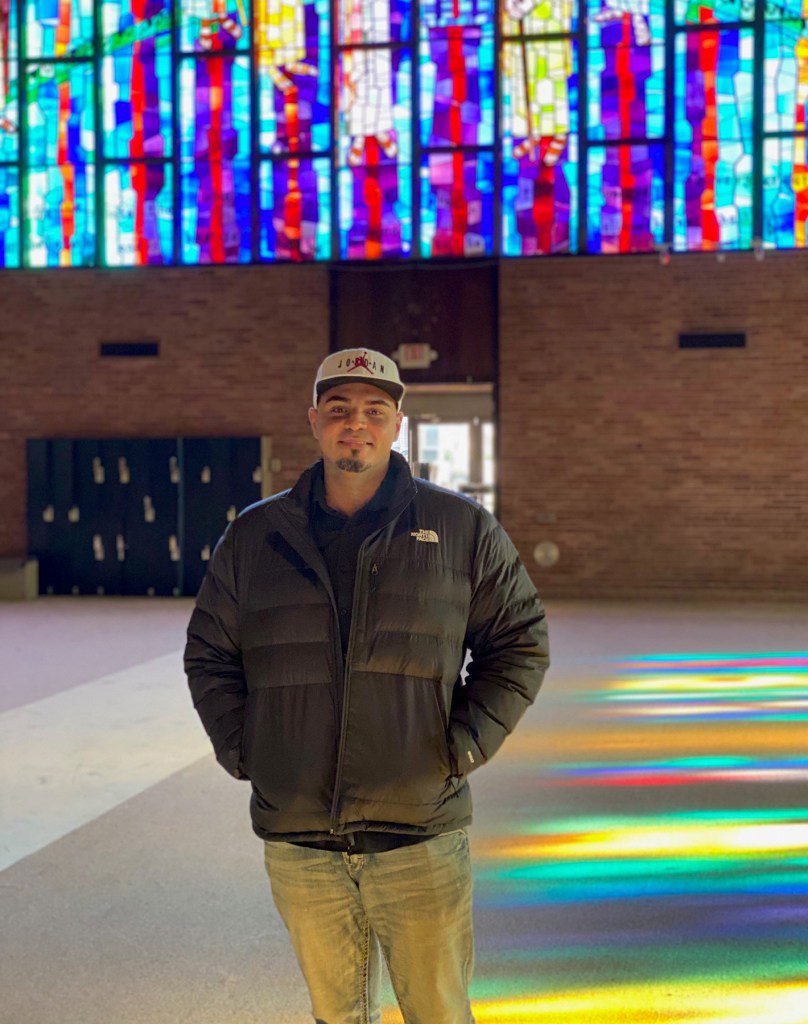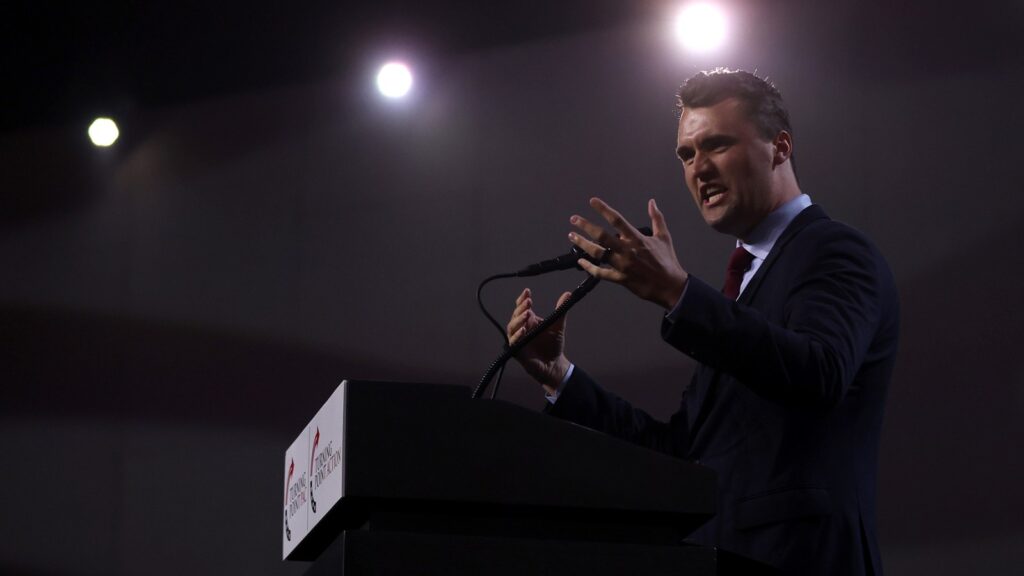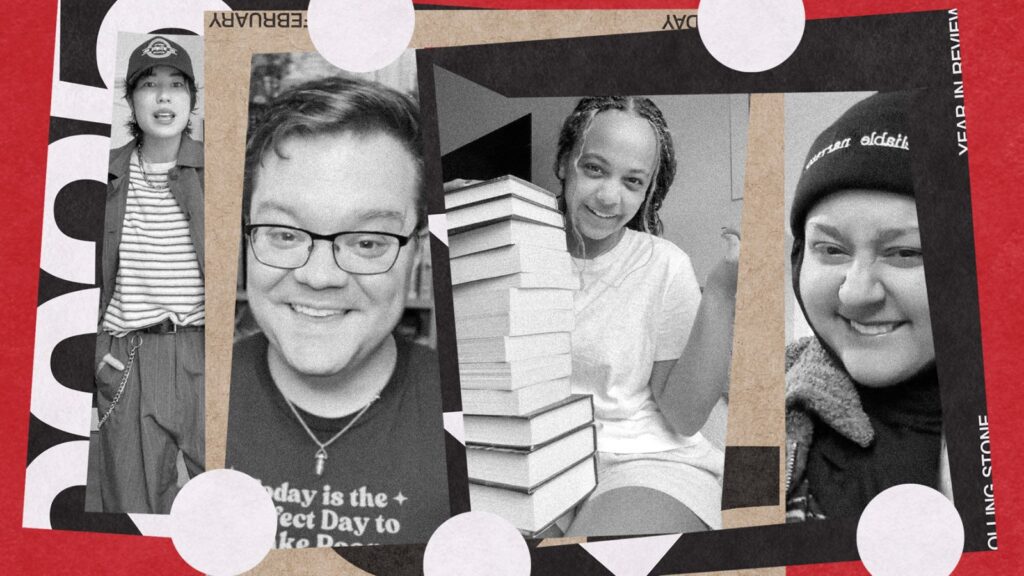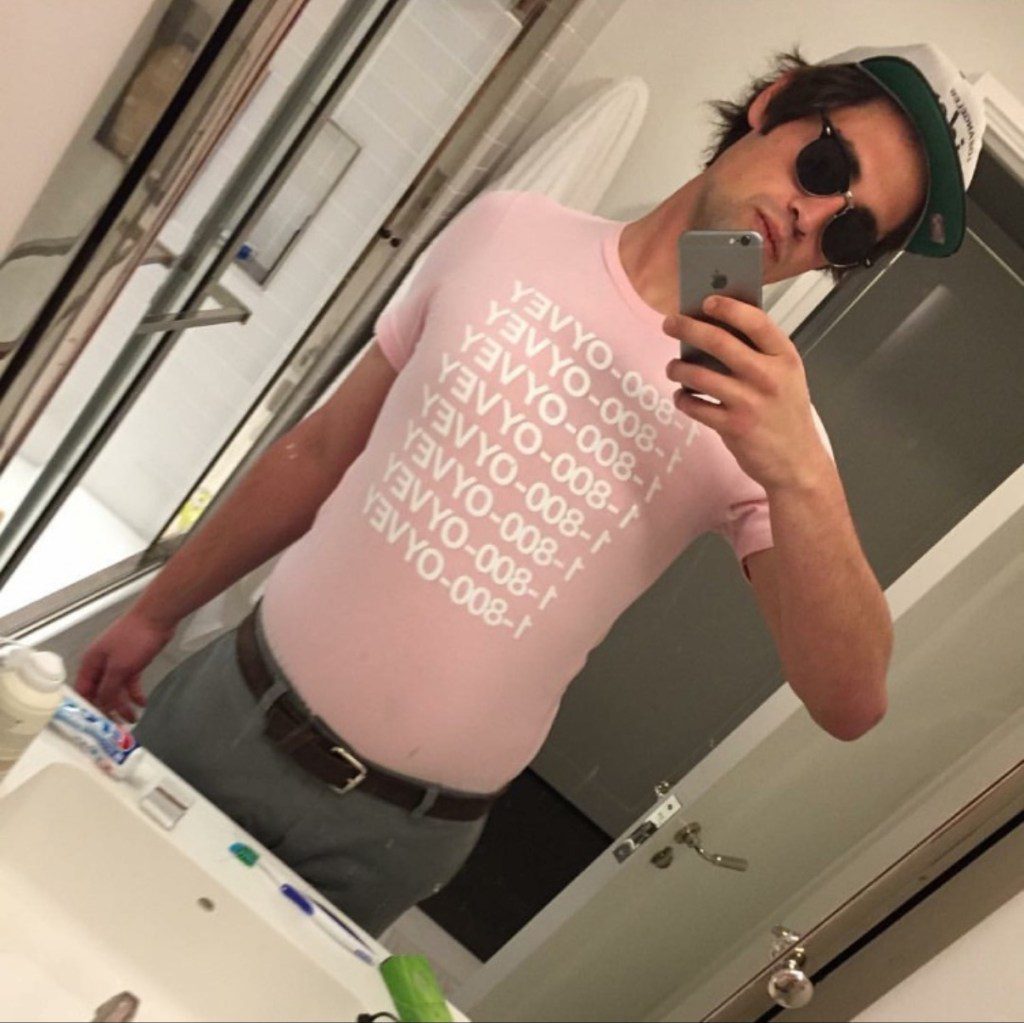‘My Generation Has Been Destroyed’ — Inside the Mental Health Crisis Facing Michigan’s Muslim Youth
This article was produced by Capital & Main in collaboration with Rolling Stone.
As a boy, Rabih Darwiche would sprint for cover when the monthly test sirens ripped through his quiet suburban Detroit neighborhood.
Darwiche’s terror was about more than the earsplitting roar alone: The tornado alarms took him back from Dearborn, Michigan, to his early childhood in 1980s Lebanon. There, similar sirens warned of imminent bombings by Israeli jets soaring overhead. It’s safe, his parents would say to soothe their six-year-old boy, we’re in America now.
But after 9/11, escaping the war in Beirut did not mean finding peace in the U.S. The Israel-Gaza confict has in recent months reinforced that reality as it spurred soaring anti-Muslim sentiment that continues to imperil the well-being of people like Darwiche.
Community members, faith leaders, and mental health specialists in greater Dearborn say that the legacy of post-9/11 counterterrorism measures — dragnets on social media, FBI agents in schools, and informants in mosques — has placed a generation of young Muslim Americans in the crosshairs of law enforcement.
In more than two decades since the United States kicked its Patriot Act-era counterterror programs into full gear, over 500 high-profile court cases have illustrated the ongoing burden of discriminatory policing on Muslim and Arab Americans. In September, Department of Justice and FBI officials were sued over surveillance practices in alleged violation of targets’ constitutional rights. Persistent discriminatory policing has coincided with record-setting rates of hate crimes reflecting anti-Arab sentiment and Islamophobia — patterns that have been further aggravated since the start of the Israel-Hamas conflict, as theFBI amped up surveillance, and as anti-Muslim sentiment also spiked. In recognition of troubling trends, the White House announced in November the first national strategy to combat Islamophobia.
Darwiche, who moved to Dearborn in 1989 when he was six years old, came of age as a young Arab American man in a country that moved quickly from mourning nearly 3,000 killed on 9/11 to retribution: “A society that sees you as the enemy,” he says.
In his life, this translated into whispers that turned into headlines, and informants infiltrating mosques and schools. His friends and neighbors were repeatedly stopped by state police at checkpoints at the central intersection of Warren and Wyoming avenues, and Darwiche found himself under the microscope once again.
Darwiche tried to keep his head down: “I would just stay out of the way,” he says, which, for the hulking former defensive tackle, wasn’t always easy.
His anxiety grew.
For Darwiche, that distress pulled a refugee who still wrestled with trauma from his childhood toward depression. In that way, his experiences are similar to those of so many other young Muslim Americans who came of age in the immediate aftermath of the 2001 terrorist attacks — a group that experts now call the “9/11 generation.”
Then, 2002: a 19th birthday, a severe knee injury playing basketball, and an opioid prescription that led to a personal revelation. “For the first time, I felt comfortable in my own skin,” Darwiche says years later. He began to self-medicate; quickly, he got hooked.
After 14 years of ups and downs — including humiliation, incarceration, and near-death experiences — Darwiche recovered. But the now advocate and behavioral health specialist worries about the long-term impact of this crisis on his community. “My generation has been destroyed,” Darwiche says.
Rabih Darwiche at a HYPE Athletics facility near Dearborn. Darwiche says he struggled growing up in “a society that sees you as the enemy.”
Eli Cahan
As the Israel-Gaza conflict stretches into its sixth month — and as an op-ed writer in The Wall Street Journal calls Dearborn “America’s Jihad Capital” — anti-Muslim sentiment has hit a fever pitch, community leaders say. Such tensions have left the Biden administration scurrying to rebuild bridges in the historically Democratic stronghold. In early February, the White House dispatched officials to Dearborn to shore up a crucial bloc of 110,000 residents in a swing state that was decided by just 150,000 votes in 2020.
The war has further inflamed the trauma, anxiety, and depression that many in Dearborn have carried with them since 9/11. “Life seems heavily veiled in a haze of shared grief, fear, helplessness and even guilt,” Abdullah H. Hammoud, Dearborn’s mayor, wrote in The New York Times on Feb. 20. “We don’t have to imagine the violence and injustice being carried out against the Palestinian people. Many of us lived it.” With the threat of civilian violence and police surveillance associated with the conflict, mental health struggles have proliferated, behavioral health specialists in greater Dearborn say.
Arab and Muslim Americans face significantly higher rates of mental illness, studies from major medical journals show — including suicide rates that are more than double those of other religious groups. In addition, data obtained by Capital & Main shows that hundreds of members of the community have overdosed on opioids in recent years, and overdose death rates among young people there are up to four times the national average.
Shady Shebak, an addiction medicine specialist in Dearborn, has seen the surge of mental illness and substance abuse firsthand. “When we opened up [our] clinic, we were expecting that there was going to be a large stigma,” Shebak says. But these days, he added, they’re booked up weeks in advance.
In response to emails and a Freedom of Information Act (FOIA) request by Capital & Main, the FBI declined to answer questions on the specifics of its surveillance strategies, or their impact on the health of the community.
The FBI said it could “neither confirm nor deny” in response to questions posed by Capital & Main. “The mere acknowledgment of the existence or nonexistence of such records is itself a classified fact” that could expose “techniques” used by the FBI, an agency records officer wrote.
Amid these challenges, Dearborn community organizations have sought to contain the mental-illness crisis through harm reduction efforts. But a lack of data, among other issues, has hindered their ability to do so. And according to people like Darwiche, that’s left the community’s younger generation in the lurch.
“Mental health is so stigmatized in the community … we just try to fill that void with toughness,” he says. “Until we can’t anymore.”
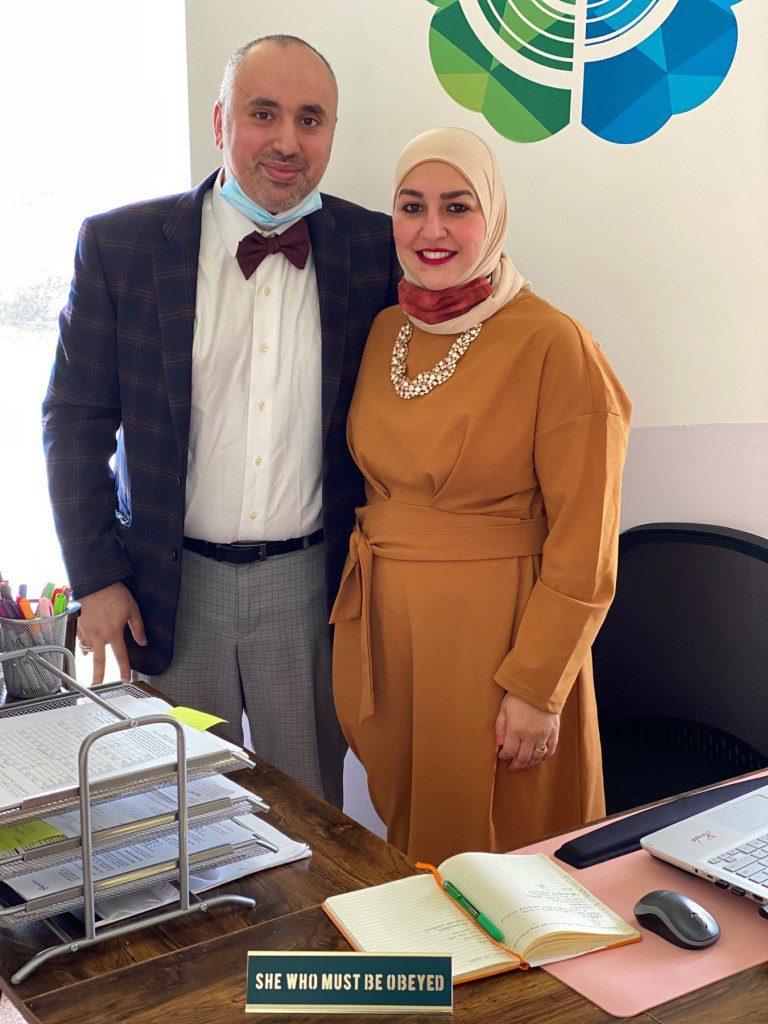
Dr. Shady Shebak and his wife, Henda Al Biatty, at their psychiatric clinic in Dearborn.
Eli Cahan
‘Too Arab to be American’
In some ways, Khalil Abu-Rayyan’s childhood was classically American.
Abu-Rayyan, 29, grew up working nights and weekends at his dad’s Detroit pizza shop, taking orders, delivering pies. When he was off, he kicked it, skateboarding across the neighborhood.
Growing up in Dearborn was distinctive in other ways — such as hearing the adhan, or call to prayer, that echoed through parts of town five times per day. There were also the women’s hijabs and the men’s thobes that seemed to disappear on the far side of the city’s border.
But even in that environment, Abu-Rayyan felt pressure in school or in town to adhere to stereotypical notions of what it means to be American. At times, Abu-Rayyan, who called himself “Kay” or “Ray” to fit in, says he wrestled with his split identity. “I was too Arab to be American,” he says, “and too American to be Arab.”
After the attacks on the World Trade Center and the Pentagon, fitting in became harder. The sideways looks in the hallways. The bullying in the cafeteria. The blame, the slurs, and the hate-mongering all over the media. Abu-Rayyan often kept his beard tightly trimmed, and told people he was Hispanic. Or Italian. Or, sometimes, white.
“During 2001, everything pretty much changed … we were to blame,” says Abu-Rayyan, who was in elementary school at the time. “Now you’re not this immigrant trying to live the American dream — you’re an outsider.”
A decade or so later, when Abu-Rayyan was in high school, he found a community online among proud Muslim Americans — “a private life where I could see a sense of belonging,” he says. In time though, social media nudged him toward more nefarious forums; soon, the teenager started retweeting videos produced by the Islamic State of Iraq and Syria, or ISIS. Later, Abu-Rayyan posted photos of himself in fatigues, brandishing a pistol, and giving a one-finger ISIS salute to the camera. (Abu-Rayyan, like tens of millions of other Americans, owned the weapon legally, he says.)
In the winter of 2015, then in his early 20s, he also found the “love of his life” online: a 23-year-old Pakistani business major at Ohio State University named Ghaada. Abu-Rayyan, who’d never had a romantic relationship before, was smitten with her and they were soon engaged. “I love you sooo much habibti,” he texted her on Dec. 12, “my life…my wife.”
One of the things they discussed: their shared devotion to Islam, including those retweets. The public nature of those retweets, his proud association with Islam, and the specter of law enforcement monitoring appeared to worry Ghaada. “You have to be careful Khalil. It’s [sic] sounds like you are being watched,” she wrote to him on Dec. 13. “It’s said they are the feds,” she added, “so be careful what you say.” He reassured her that, unlike a handful of Americans flying to Syria to fight for ISIS, he had no interest in violent extremism.
Within days, Ghaada — who, Abu-Rayyan later discovered, was an FBI informant — told the agency about their conversations and his tweets. Within weeks, he was arrested. Within months, he was in federal prison.
Large-scale surveillance by the FBI on Muslim American communities is not new.
Since the 1950s — a decade when J. Edgar Hoover, the FBI’s founding director, pioneered the use of covert surveillance against Americans — Muslim individuals have been a focus of the FBI’s interest, says Dawud Walid, executive director of the Michigan chapter of the Council on American-Islamic Relations (CAIR).
A 1955 FBI memo described the Nation of Islam — an organization whose membership at various points included Malcolm X, Muhammad Ali, and Jay Electronica — as “an especially anti-American and violent Cult … dedicated to the propagation of hatred against the white race.”
Surveillance in Muslim American communities only amplified following 9/11, Walid says. Every president since George W. Bush has played a role, he adds: Most recently, the Biden administration has allocated tens of millions toward a new counterterrorism center that, as of June 2023, had trained hundreds of communities how to create “local prevention efforts.”
“A government that purports to protect all of us stigmatizes and discriminates against some of us,” says Hina Shamsi, director of the American Civil Liberties Union’s National Security Project. “It is the prevention model run amok.”
These programs rely heavily on surveillance of individuals within the community for the smallest details, according to Walid — like Abu-Rayyan’s interactions with Ghaada.
A 2006 FBI memo described growing facial hair, attending to the adhan, or donning hijabs or thobes as the first steps toward radicalization. The Obama administration rolled out the Countering Violent Extremism (CVE) program aimed at preventing individuals and groups from “radicalizing and mobilizing to commit violence.” A 2011 White House memo elaborated on CVE’s aim to install networks of informants in hubs of at-risk communities — including in schools, youth agencies, grassroots organizations, and local companies. In a 2017 report, the Government Accountability Office (GAO) stated that the organization was “not able to determine if the United States is better off today than it was in 2011 as a result of these tasks.”
“The standard is not even that someone has been rightfully accused of wrongful conduct — it’s the threat of wrongful conduct,” Shamsi says. “They’re placed in a situation of having to prove themselves innocent of something they’ve never done, or will never do.”
Dearborn is particularly targeted by law enforcement agencies, second only to New York City in terms of the number of its citizens on the terrorist watchlist in the past decade. Recently, police camera surveillance systems with facial recognition technology have proliferated amongst greater Dearborn’s schools and storefronts — despite Department of Justice studies questioning their effectiveness. In April 2023, the FBI said it has doubled the number of domestic terrorism investigations since 2020; thousands of Americans are currently under the agency’s microscope. Simultaneously, FBI retaliation against individuals who refuse to become informants has become commonplace, Shamsi says.
“It’s a due-process nightmare,” Shamsi added.
Mary Abouljoud, an FBI community outreach specialist focused on Muslim American communities, says that the agency recruits in Dearborn’s schools. The FBI’s programming includes events such as a weeklong Teen Academy to teach skills in “investigative tactics” and “assisting with cases,” according to the agency’s website.

A strip mall in Dearborn blends Americana with the Middle East.
Eli Cahan
“We’re always looking for talented individuals to work for us,” Abouljoud says, “so we start on them when they’re young.”
In email correspondence with Capital & Main, the FBI declined to answer questions on the specifics of its surveillance strategies, including the use of informants in Dearborn; the criteria for initiating surveillance on an individual, including placement on a watchlist; the use of retaliatory measures against individuals who refuse to become informants; the number of informants currently operating in Dearborn; or the number of Dearborn residents currently on a watchlist or no-fly list.
In response to a FOIA request by Capital & Main on these questions, the FBI sent a CD containing over 1,100 pages of documents largely dated in the late 2000s, of which almost 1,000 pages were deleted, and many of those that remained were duplicated or blacked out.
In addition, though the 2017 GAO report mandated the Department of Homeland Security (DHS) to “implement a process to assess overall progress in CVE, including its effectiveness,” the agency declined to comment to Capital & Main on whether it has done so. A 2023 GAO report found that between 2013 and 2021, the number of open terrorism investigations more than tripled to over 9,000. However, according to the University of Maryland’s Global Terrorism Database, since 9/11, zero domestic incidents have directly involved ISIS, al-Qaeda, al-Shabab, or the Taliban — the four groups most targeted by FBI investigations.
In September, Walid’s organization sued the DOJ and FBI for use of watchlisting tactics that violate individuals’ constitutional rights, placing them under “permanent suspicion and impos[ing] sweeping consequences that alter nearly every aspect of [their] lives.”
Still, since the outbreak of war between Israel and Hamas in early October, the FBI’s surveillance has stepped up further. In a series of statements, the agency highlighted “closely monitoring unfolding events,” including by “talking with leaders of all faiths … sharing information, and asking them to let us know if they see anything concerning.”
“In this heightened environment, there’s no question we’re seeing an increase in reported threats,” FBI Director Christopher Wray said in an Oct. 14 speech. “We have to be on the lookout.”
From the start of the Israel-Gaza war, anti-Islamic bias and hate proliferated. According to statistics from a CAIR study, reported anti-Islamic incidents tripled between Oct. 7 and Nov. 4 compared to previous years. “American Muslims are facing the largest wave of Islamophobic bias” in nearly a decade, according to the study. In February — months after Fox News labeled protesting Dearborn high schoolers as having a “pro-terrorist mindset,” and in the immediate wake of inflammatory op-eds from The Wall Street Journal and The New York Times, and out of concerns for its citizens’ safety — the city stepped up security in mosques and major infrastructure points.
“The events that are going on right now are kind of reminding us of what the Muslim community experienced after 9/11,” says Imam Sayed Saleh al-Qazwini, founder of the Muslim Educational Community Center of America (MECCA) in Michigan.
The specter of surveillance and hate looms large for people like Abu-Rayyan, who was ultimately sentenced to five years in prison — including many months in solitary confinement — even though the terrorism charges were never substantiated. (He was convicted for illegal possession of a firearm.) Tens of thousands of Twitter users engaged with social media posts like the ones that triggered the investigation of Abu-Rayyan within hours of the Israel-Hamas conflict, according to The New York Times. Such activity does not reflect “material support” of terrorism, Shamsi says, and is protected under the First Amendment.
These days, Abu-Rayyan is back living and working in Dearborn after years in prison. He expresses regret about what he characterizes as “teenage boy stuff.”
Still, he lives in fear. “I still have in the back of my mind: I might get stopped or pulled over or raided by the FBI,” Abu-Rayyan says. “That kind of stuff doesn’t go away.”
‘These Are the Consequences of Hate’
For Ali, by the time his depression set in, the gunshot wound he’d suffered in Southern Lebanon as a 10-year-old had already scarred over.
For Zeinab, the cutting started in middle school, decades after her parents moved to Dearborn from Iraq, and years after she started regularly reciting du’a.
For Suha — by Eid al-Ahda in 2021, when her own anxiety took over — her older brother had moved back, her youngest brother was addicted, and her middle brother had died from an overdose.
For Kassem, his 29th birthday marked the year when he became too afraid to leave home. Long gone were the days of gooey pita grilled cheeses and the piping-hot molokhi’a, decked out Thanksgiving tables and Christmas Lion King VHS tapes retrieved from a shop 10 miles away amidst a whiteout. His three closest friends were dead, and he developed crippling agoraphobia.
“I was so afraid of people,” Kassem says. “It got really dark.”
Later that year, he hung a belt on the ceiling, stepped onto a chair, and tried to take his own life.
Zeinab, Ali, Suha, and Kassem — all natives of Dearborn, all in their 20s — represent a larger pattern of mental illness in Arab and Muslim American youth today, says Farha Abbasi, an assistant professor in psychiatry at Michigan State University and managing editor of the Journal of Muslim Mental Health.
A review of 53 studies in the American Journal of Public Health found “consistent relationships between experiences of discrimination and poor mental health.” The manifestations found in these studies included self-harm (like Zeinab), depression (like Ali), anxiety (like Suha), and paranoia (like Kassem). Other studies have found that higher levels of internalized Islamophobia likely further exacerbate such psychological distress. Individuals who reported a history of government surveillance describe higher rates of psychological distress, studies show.
“This is the generation that has grown up in a toxic environment … on the heels of 9/11,” Abbasi says. “We have to consider the trauma of being Muslim in this country right now.”
That trauma likely stems from physical and emotional violence against Muslims and Arabs that has become commonplace, says Tarek Zidan, an assistant professor of social work at Indiana University who specializes in Arab and Muslim American mental health.
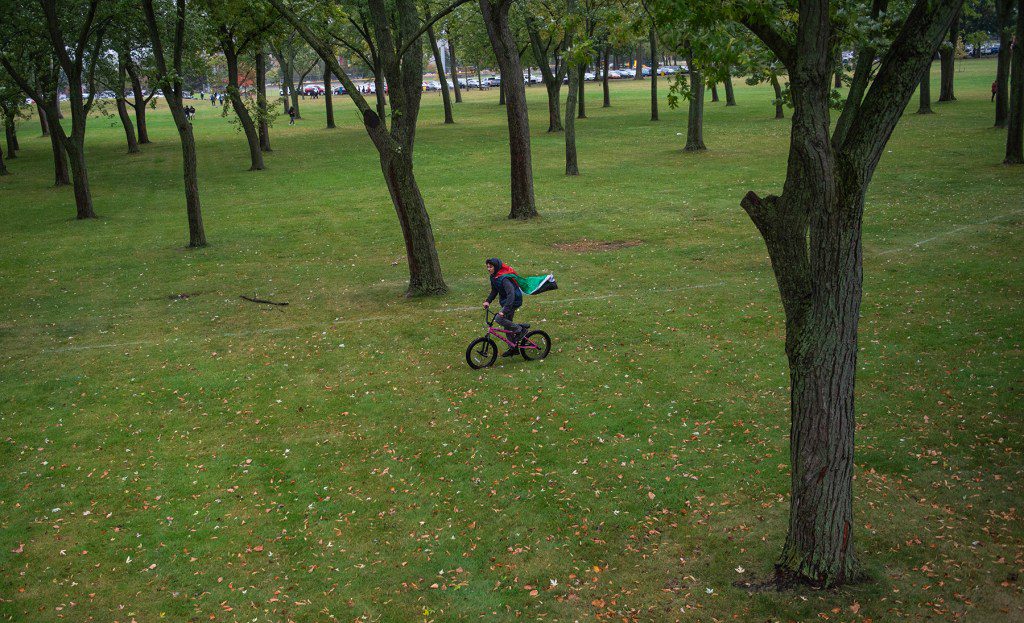
A person rides a bike with a Palestinian flag during a march in support of Palestinians last October in Dearborn, Michigan.
Matthew Hatcher/Getty Images
According to FBI data, the number of assaults against Muslims leapt after Donald Trump’s election in 2016 and persists at levels resembling those in 2001. Rates of anti-Arab hate crimes are the highest they’ve ever been. Since the turmoil in the Middle East, anti-Islam sentiment has grown further still, according to the FBI.
“For too long, Muslims in America … have endured a disproportionate number of hate-fueled attacks and other discriminatory incidents,” White House Press Secretary Karine Jean-Pierre said in a November 2023 statement about the Biden administration’s initiative to counter Islamophobia.
The 9/11 generation of Arab and Muslim Americans has “a target on their back, being told they are not wanted here, that they are homegrown terrorists,” Abbasi says.
In email correspondence with Capital & Main, the FBI declined to comment on the potential mental health impact its surveillance strategies may be having in Dearborn.
“FBI policy prohibits us from confirming or denying the existence of investigations, so unfortunately, we cannot provide you with that information at this time,” Gabrielle Szlenkier, an agency spokesperson, wrote in an email.
In some cases, these forces have been fatal. A 2021 study in JAMA Psychiatry found that Muslim Americans were more than twice as likely to attempt suicide than members of other religious groups. Those 18 to 29 years old were at highest risk. The authors also noted that rates of suicide attempts were higher in the U.S. compared with rates in Muslim majority countries such as Lebanon, Pakistan, and Iran.
“Islamophobia, discrimination, [the] increase in hate crimes after 9/11 — all of these led to … a mental health crisis,” Zidan says.
In 2022, Dearborn took the unusual step of inaugurating a city public health department, a function often served by county or state departments. “Mental health and substance use disorder were certainly top of mind when we launched the department,” says Ali Abazeed, the department’s inaugural director. “When you turn neighbors against neighbors … that fraying of the social fabric of communities has devastating consequences to health.” The severity of these challenges was “definitively” higher in Dearborn’s youth and young adults, Abazeed says.
Since October, his staff, in partnership with police, emergency medical services, and schools, have faced a “deluge” of mental health calls.
“We’ve really felt … the consequences of the global becoming very local,” Abazeed says. “These are the consequences of hate.”
‘All Your Worries Are Gone’
After the intravenous lines come out and the ventilator is removed, but before the son or sister or uncle or niece is clothed and shrouded, Wassim Abdallah performs the ritual wajib al-ghus’l.
First, Abdallah rinses the sinuses of the cadaver. Then, the mouth. Then, the body: the right chest and back, followed by the left. He will run kaffir–infused water over the corpse three times over, and dress the deceased for the final judgment.
Abdallah — who is council chairman for Dearborn Heights, and on the board of directors at the Islamic Institute of America, one of the city’s largest mosques — has volunteered as a ghus’l al-mayyit, or body washer, for over a decade.
It wasn’t until recently, though, that he started to notice a pattern: The deceased have been getting younger. And Abdallah, like Kamel Jawad — who has volunteered as a caretaker of the amwat for decades at the Islamic Center of America — blames this pattern on one thing: opioids.
“People in their 20s, people in their teens … every year, more and more and more,” Abdallah says. “They had a whole life ahead of them.”
Abdallah and Jawad are not the only ones seeing red flags about opioid use in the community. David Brogan, chief of Dearborn Heights’ fire department and emergency medical services, says the problem is getting worse.
“Over the past 10 years, it’s been increasing at a pretty steady rate,” Brogan says. “We’re in a situation now when we get a call that someone in their 30s or under is unconscious, we pretty much assume it’s an overdose.”
Data obtained by Capital & Main from city police and fire departments show that hundreds of residents of greater Dearborn have overdosed — and dozens have died — in recent years. The opioid overdose death rate in men aged 20-39 in Dearborn has reached four times the national average, and over 2.5 times the state average, according to data from the Michigan Department of Health and Human Services.
The concept of e’ib, directly translated as “shameful,” dictates that drug use is often a product of poor parenting — and may prevent the individual from being admitted to jannah, or heaven, says Imam al-Qazwini of MECCA.

Imam Al Qazwini at the Muslim Educational Community Center of America in Canton, Michigan, says that drugs are too often addressed as sin rather than illness.
Eli Cahan
“It’s taboo … no parent wants to see that their children or their sons or daughters are wasting their life and being far from God,” al-Qazwini says. “It’s not addressed as an illness — it’s addressed as a sin.”
From the public health standpoint, that kind of stigma likely leads to underreporting, Abazeed says.
To Shebak, the Dearborn addiction medicine specialist, the opioid problem is the byproduct of the mental health crisis. Shebak says that the root causes of drug use in the community lie in seeking an escape from the distress of discrimination and surveillance.
“If I don’t have somewhere safe to go … that’s where the substance use begins,” he says.
“The high is euphoria, of numbness, of bliss, of calm, of serenity,” he adds, “where all your worries are gone for a few minutes.”
For the Saad family, like many others in Dearborn, those struggles hit close to home.
In March 2022, Jacob Saad gave a eulogy for his brother, Hussein, who died of an overdose when he was 28 years old. “We have been struck by a calamity we were not prepared for: The opioid epidemic has devastated us for far too long,” Saad says.
“We all know someone fighting the battle of addiction,” he adds, “let my brother be the last casualty of this battle.”
‘Data Violence’
As one of 11 siblings, Mona Abdallah-Hijazi was raised tough — as an ukht al rijal, or sister of men, she says, “so I could hold my own.”
That kind of fortitude meant that, when she saw her brothers struggling with substance use, she resolved to do something. For the past seven years, she’s worked as a community engagement manager at the Arab Community Center for Economic and Social Services (ACCESS), devoted to fighting the opioid crisis.
“My brother was a statistic,” she says, referring to his fatal overdose. “My dedication is because I lost control in my own life … I think a lot of my passion sparked after his passing.”
But people like Abdallah-Hijazi can’t fight the opioid epidemic alone, Abazeed says. Their ability to do so hinges on federal aid that is often tethered to the U.S. Census — in which Arab Americans are not distinguished from white populations, he added.
In 2015, researchers at the Census Bureau had recommended adding a separate category for populations like Dearborn’s, calling it “optimal” to include such a category. However, in 2018, that idea was nixed, Karen Battle, chief of the bureau’s population division, said at the time. Battle did not elaborate on the factors behind that decision.
The result is what Abazeed calls “data violence”: The lack of data on Arab Americans hamstrings Dearborn’s organizations from tapping federal funds critical to this specific community.
“The Census is responsible for doling out trillions in federal aid every year … and [other organizations are] giving out grants,” he says, “but to get those grants, you need to submit data — we’re literally goose-trapped out of federal funding.
“It’s not a stretch to say that people are dying due to this,” he added.
Despite the lack of statistics, the community is mobilizing to fight the opioid crisis.
For example, in November 2022, one of Abazeed’s early initiatives at the public health department was jury-rigging a vending machine to give out Narcan, an antidote for opioid overdose, for free. Since then the machine has dispensed over 4,400 canisters to community members, he says.
The Dearborn Police Department, for its part, has introduced a program pairing officers with mental health experts and social workers, Chief Issa Shahin says — enrolling in addiction programs scores of youth who would have otherwise been arrested.
And, at the same time, Imam al-Qazwini is preaching harm reduction to his congregation, encouraging youth to return to the mosque. (Research shows that religiosity can be a protective factor against substance use.)
“Too often, the first time these young adults enter the mosque alone is in a casket,” al-Qazwini says.
“All I can say then is, ‘May God have mercy on their soul.’”
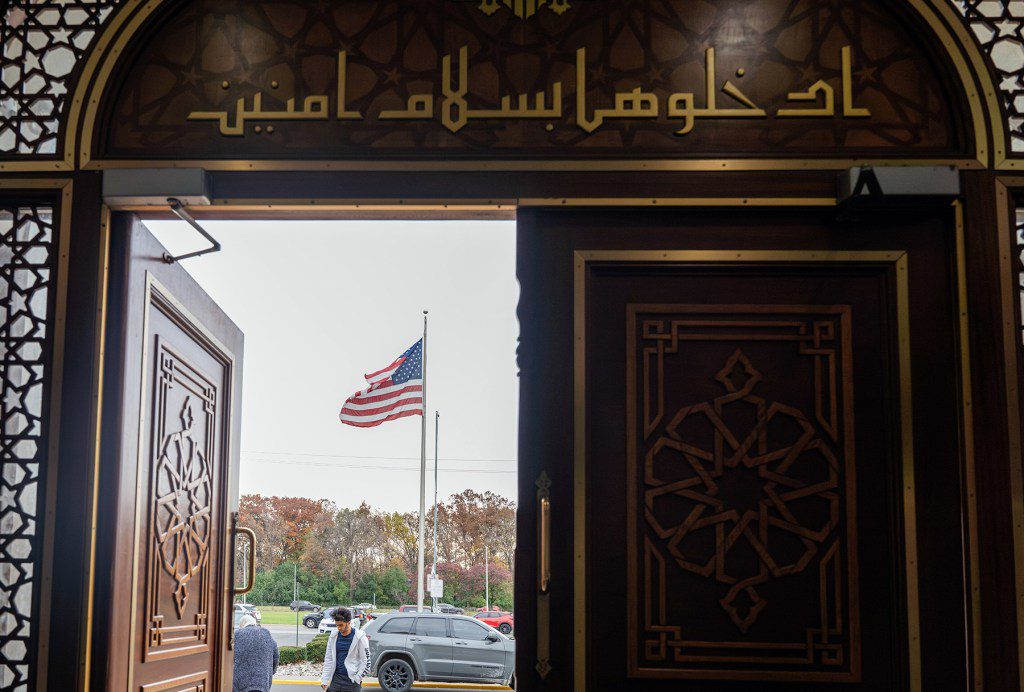
An American flag flies outside the Islamic Center of America in Dearborn, a suburb of roughly 110,000 bordering Detroit, which has one of the highest percentages of Arab Americans in the United States.
Valaurian Waller/The New York Times/Redux
‘One Is Too Many’
After years of tumult in and out of treatment centers, overdosing, and detoxing, arrested one week and back out the next, Rabih Darwiche found himself at rock bottom at the age of 33.
He’d moved back in with his parents. His license was suspended. He was facing almost a decade in prison. His liver was acutely damaged. His kidneys were on the brink of failing. That day, Darwiche resolved to turn things around.
As it turned out, the road to recovery started by scrubbing toilets. Eventually, Darwiche found his way to Ali Sayed, who gave him a job cleaning bathrooms — and an exhortation to be “part of something greater than myself,” Darwiche recalls.
Months later, he was changing his father’s diapers after the latter was diagnosed with dementia. He had a purpose again, Darwiche says. He’s been off drugs for seven years since.
These days, Darwiche is working with Sayed to help others through their struggles with mental illness and substance use. Sayed runs HYPE Athletics, a community center that enrolls hundreds of Dearborn’s youth in basketball camps — in addition to tutoring, mentoring, and career development classes.
“We want to be a part of the positive change in our youth and in our future,” Sayed says. That all starts “one three-on-three game at a time,” he adds.
HYPE has also partnered with the Substance and Mental Health Services Administration, the National Institutes of Health, the Wayne County Public Health Department and local schools to build out a robust substance prevention program that includes group therapy, drug screening, and outpatient treatment clinics, Darwiche says.
Outside of jujitsu tournaments at HYPE, though? Darwiche was recently appointed to the board of Families Against Narcotics — a job he accepted with pleasure.
“Hope is just [about] being the example,” Darwiche says.
Still, not all of the community’s children have been as fortunate as Darwiche.
At a road by the cemetery on an overcast Midwestern day, a clutch of bearded and bundled Dearborners huddle with drooped shoulders and downcast eyes. In the Facebook video, a man in a Black Jordan hoodie and teal scrub bottoms speaks up.
“I don’t want to see another kid in his 20s buried over an overdose,” he yells to the group.
“One is too many.”
Nadine Jawad contributed reporting.


